Sunday 11th February 2018 – Westlands Farm, Route de Franfief, St Brelade – 10:30-13.00
From Jersey Conservation Volunteers
The details The task this month focuses on planting native trees and hedging on field boundaries to create wildlife corridors, generally connecting existing areas of hedge and woodland habitat. The planting offsets losses caused Dutch Elm Disease, winter storms, the general over-maturity of our existing habitat and that lost to development and farming practices.
Three flagship mammal species are mentored and information and guidance is received form those groups who care for and monitor red squirrels, hedgehogs and bats. This is the 3rd or a 3-year programme planting for various bat species, linking up the ponds and wet meadows of Pont du Val and Le Parc du Pont Marquet.
Please contact Julia at j.meldrum@gov.je or Jon at jonparkes@nationaltrust.je or phone Julia on 441600 or Jon on 483193 before you go just case anything changes.
The site Le Parc du Pont Marquet, St Brelade.
Parking Meet at Westlands Farm, Route de Franfief, St Brelade. Look out for the Jersey Trees for Life banners and roadside stall selling logs and produce at the entrance to the property, turn into the entrance and parking will be at the end of the long concrete drive.
(Jersey phone directory Map 7, L15) Google maps here
The task Cutting back willows and other vegetation and dead hedging along the stream.
We will leave the carpark at 10:20 for a 10:30 start and with around 500 trees to plant we will start at 10:30 prompt and plan to work until about 12:30.
Tools needed Please bring your own spade if you have one (note garden forks and trowels are not suitable for this task), we have some spades but not enough for all.
Clothing needed. It may be cold and, being Jersey, it may be wet so please dress sensibly and wellies may be absolutely essential!
Children All are welcome, young or old. Children under 16 must be supervised by a parent or guardian during the task.
We’ll work until 12.30 when we will we will get stuck in to a piece of Kim’s gorgeous home-made cake and a hot drink.
See you there!







 Birds On The Edge and Durrell: an evening with
Birds On The Edge and Durrell: an evening with  Closer to the mainland, the wildlife and ecosystems of the Channel Islands, may not seem like classic examples of island biogeography. However, like more distant oceanic islands we currently have no native predatory mammals (several introduced ones) and none of the normal natural grazers to keep vegetation in check (not since we became islands probably) the latter roles currently partially filled by introduced rabbits and, at least in places, by managed sheep and cattle. And like the Mascarenes, Hawaii and New Zealand we are seeing the impacts of man and the animals and plants we like to surround ourselves with.
Closer to the mainland, the wildlife and ecosystems of the Channel Islands, may not seem like classic examples of island biogeography. However, like more distant oceanic islands we currently have no native predatory mammals (several introduced ones) and none of the normal natural grazers to keep vegetation in check (not since we became islands probably) the latter roles currently partially filled by introduced rabbits and, at least in places, by managed sheep and cattle. And like the Mascarenes, Hawaii and New Zealand we are seeing the impacts of man and the animals and plants we like to surround ourselves with. and just what can go wrong with them when man gets involved. Julian will give a talk on Friday 11th November at Jersey Zoo. Julian has authored many books on extinct birds, globally and particularly from the Hawaiian and Mascarene Islands (Mauritius, Reunion and Rodrigues). However, Julian is much more than an author though, his intense research into his subjects has included reconstructing and painting species known only from bones or travellers notebooks and establishing their niche in ecosystems once untroubled by
and just what can go wrong with them when man gets involved. Julian will give a talk on Friday 11th November at Jersey Zoo. Julian has authored many books on extinct birds, globally and particularly from the Hawaiian and Mascarene Islands (Mauritius, Reunion and Rodrigues). However, Julian is much more than an author though, his intense research into his subjects has included reconstructing and painting species known only from bones or travellers notebooks and establishing their niche in ecosystems once untroubled by An expert on the dodo, a species very familiar to Channel Islanders, Julian will talk about his research into the birdlife of Mauritius and his most recent discoveries on the life and observations of Etienne Thirioux, the hairdresser and amateur naturalist, whose contribution to the fossil record of Mauritius has never been bettered. Julian will illustrate his talk with contemporary artwork and his own paintings. He will reflect too on just how easily islands and their natural inhabitants can be changed for ever.
An expert on the dodo, a species very familiar to Channel Islanders, Julian will talk about his research into the birdlife of Mauritius and his most recent discoveries on the life and observations of Etienne Thirioux, the hairdresser and amateur naturalist, whose contribution to the fossil record of Mauritius has never been bettered. Julian will illustrate his talk with contemporary artwork and his own paintings. He will reflect too on just how easily islands and their natural inhabitants can be changed for ever.
 Puffins, petrels and pests – saving seabirds across the Atlantic
Puffins, petrels and pests – saving seabirds across the Atlantic
 From the
From the 


 Sunday 14th May 2017 – Hamptonne meadow, St Lawrence – 10:30-13.00
Sunday 14th May 2017 – Hamptonne meadow, St Lawrence – 10:30-13.00




